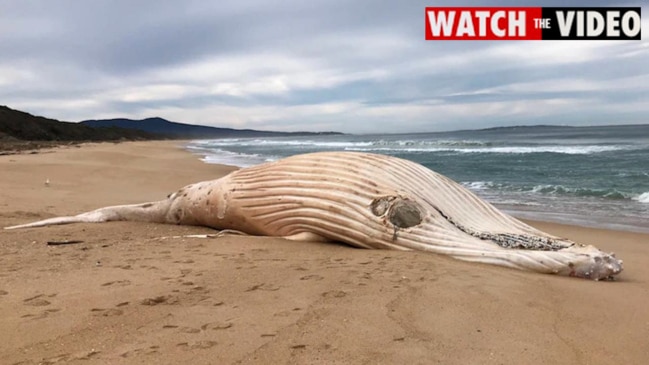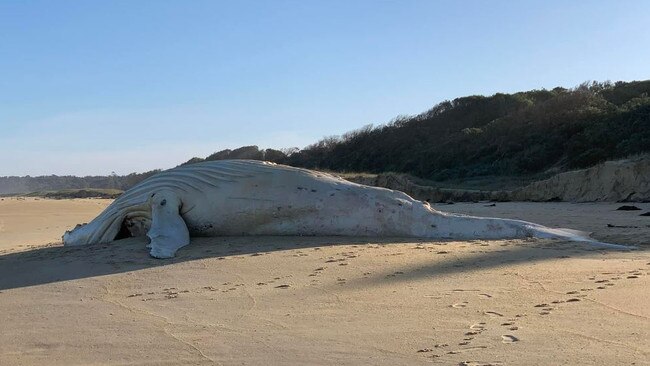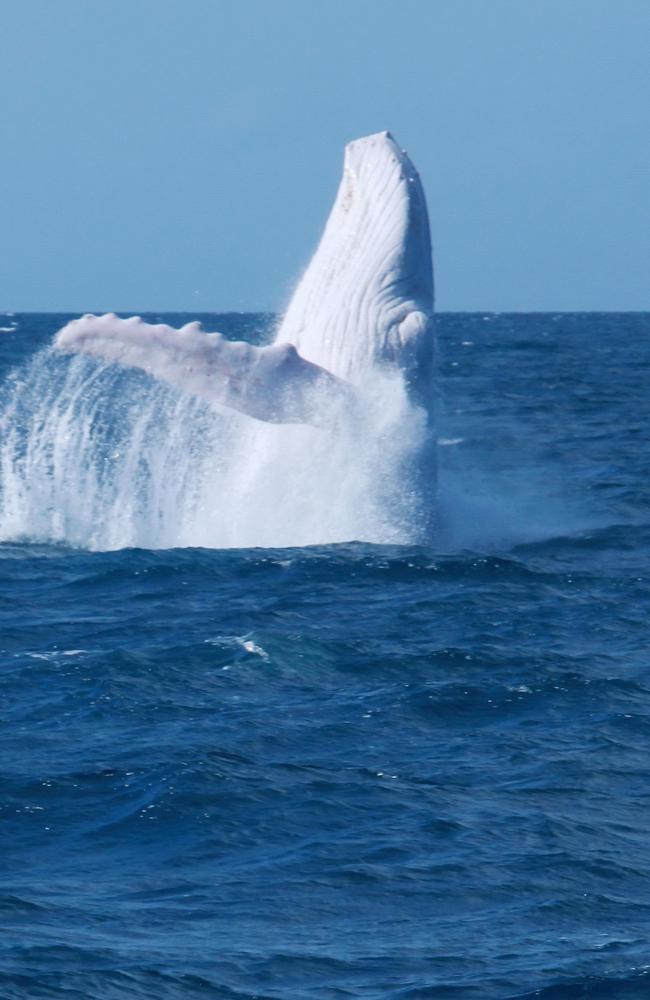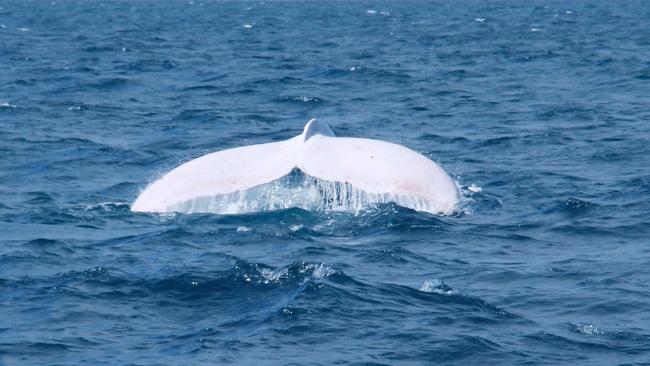Scientists worked through night to determine if washed up white whale was famed Migaloo
Scientists have confirmed the identity of a white whale whale washed up in Victoria, amid fears it was famed albino humpback, Migaloo.

News
Don't miss out on the headlines from News. Followed categories will be added to My News.
Government wildlife officials have have confirmed a white humpback whale found washed up at Mallacoota on Saturday is not the famous Migaloo.
The Department of Environment, Land, Water and Planning (DELWP) on Sunday said its officers had examined the dead whale and confirmed it was a sub-adult female, while Migaloo is male.
DELWP regional commander Peter Brick said the department and Parks Victoria staff would be examining the carcass over coming days to learn more.
Meanwhile, members of the public are being urged to stay away from the whale carcass — and to keep their dogs away also — with it an offence to be within 300 metres of a beached whale.
It is also an offence under the Wildlife Act for members of the public to interfere, take or be in possession of any parts of a dead whale.

There are health and safety risks associated with diseases and bacteria on dead whales and sharks can frequent areas where dead whales are present.
Part of the assessment of the Mallacoota whale carcass will be to determine the original colour of the whale.
Humpback whale carcasses that have been in the ocean for some time can lose their colour and appear to be white.
Marine Mammal Foundation executive director Kate Robb said she was confident from late on Saturday the washed-up whale wasn’t Migaloo, based on a number of factors, including its length.
Dr Robb said a fully-grown male like Migaloo would likely be more than 15m long, while the whale that washed ashore was only 10m.
“Migaloo is such an infamous and much-loved whale but it’s still incredibly sad to see another whale wash up, especially a female,” she said.
Dr Robb said an estimated 40,000 humpback whales were currently migrating from Antarctica up the east coast of Australia
She said Mallacoota was on the “humpback highway” - the route whales travel as they head from the east coast of Tasmania, across Bass Strait, before ending up on the east coast in places like Hervey Bay in Queensland for breeding.
“(A whale) washing-up in Mallacoota is not unusual,” Dr Robb said.
“We have had a number of humpback whales sighted in Victoria - we’ve had a bumper season, so they’re definitely in the area.”
Dr Robb said the last confirmed sighting of Migaloo was a couple of years ago.
“So that’s why scientists are trying to track where and when we do see him, because we haven’t had that confirmed sighting for a couple of years now,” she said.
Wildlife scientist Vanessa Pirotta said the White Whale Research Centre team worked through Saturday night to assess images of the whale, where they found key features including barnacles on the throat and darkened skin.
Dr Pirotta said that the process of identifying the whale was like a “whale autopsy”, comparing the beach to a mystery site or crime scene that scientists must now sift through.


A whale that is a known companion of Migaloo’s was seen in the area earlier in the week.
According to a website dedicated to Migaloo, he is the most well known humpback whale on Australia’s east coast.
In 1991, the site states, an all white humpback whale was photographed passing Byron Bay, Australia’s most easterly point.
The unusual whale was, at that time, the only documented all white humpback whale in the world.
Researchers from Southern Cross University Whale Research Centre were able to collect sloughed skin samples from Migaloo in October 2004 when he breached.
Small pieces of skin fell into the water and were collected and analysed for DNA. From this it was confirmed that Migaloo is a male, believed to have been born in 1986.
A genetic fingerprint for Migaloo was also obtained, allowing researchers to check for relatives of Migaloo among the other whales.


